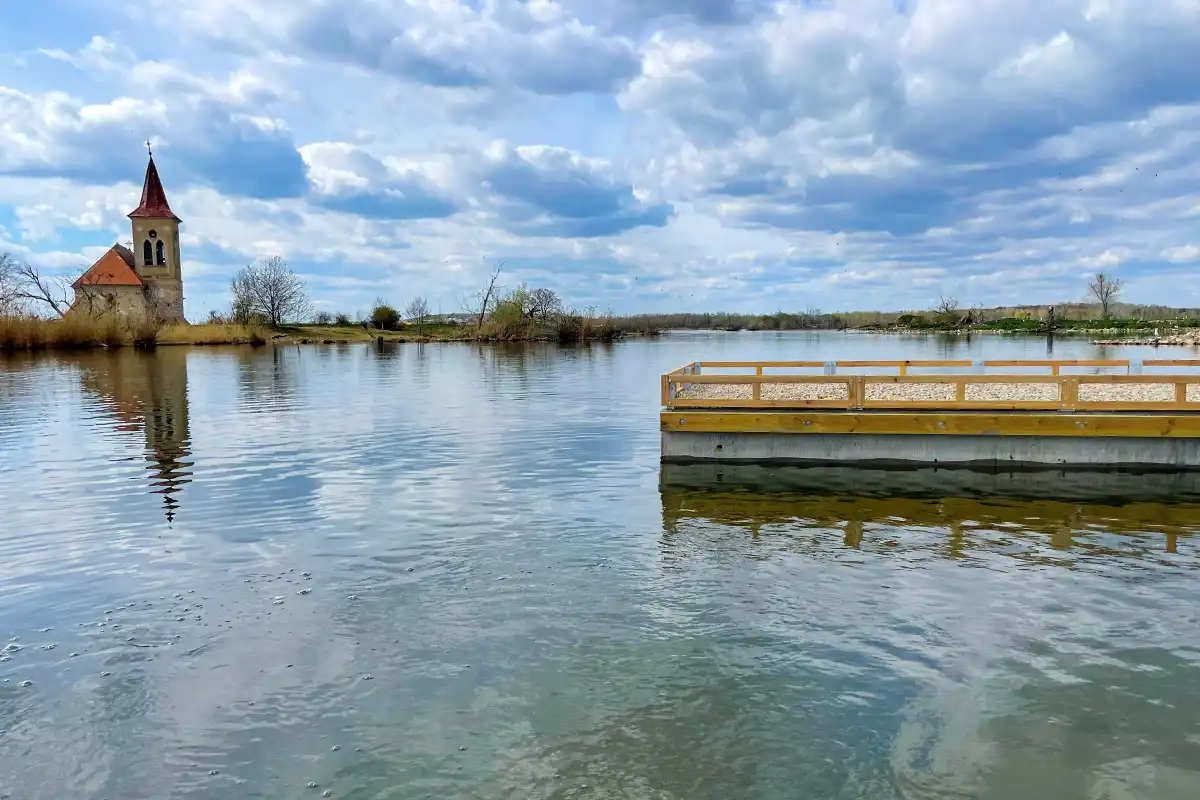Birds find new home on floating concrete platforms
Within the shadow of an abandoned 13th-century church, Věstonice is a lake within the Czech Republic’s Nové Mlýny reservoir system and an important bird breeding habitat and migration stopover. Seeking to expand the availability of nesting locations that are inaccessible to land-borne predators, local water management administrator Povodí Moravy, s.p. found a solution with SF Marina floating concrete pontoons.
SF Marina SF1030 floating pontoons are extremely stable, maintenance-free and virtually unsinkable. While the Thaya River provides nominal water movement as it flows through Nové Mlýny, the concrete structures are engineered to withstand hurricane-force wind and wave action. Comprised of 17 sections, the three arrays were built in SF Marina’s Wallhamn, Sweden facility and trucked to the location.
Installed by local SF Marina partner PROZAC s.r.o., the floating pontoon array includes one 30m L x 3m W and two 76m L x 3m W SF1030 units for a total surface area of 318sqm. The three sections are secured with heavy chains and pre-cast concrete anchors to accommodate water level fluctuations resulting from reservoir operations. Wooden fences on the platform’s perimeters keep hatchlings from falling into the water and secure the gravel base that replicates a natural nesting surface.
Located 42km south of Brno, Czech Republic, the Nové Mlýny reservoir system was created in the late 1970s by the Communist Party of Czechoslovakia by damming the Thaya River and flooding the village of Mušov. Standing on a small island, the medieval church is the last surviving remnant of the area. Věstonice was declared a Natura 2000 nature reserve by the European Union in 2005. The upper of the three basins is used for recreation while the lower is used for irrigation.
“The Nové Mlýny project is another example of the many remarkable uses creative engineers find for our floating concrete pontoons,” said Michael Sigvardsson, SF Marina CEO. “Offering minimal impact on the wetland ecosystem, the nesting platforms will remain in place and unchanged for generations of migratory bird colonies who are increasingly under threat due to habitat loss.”

